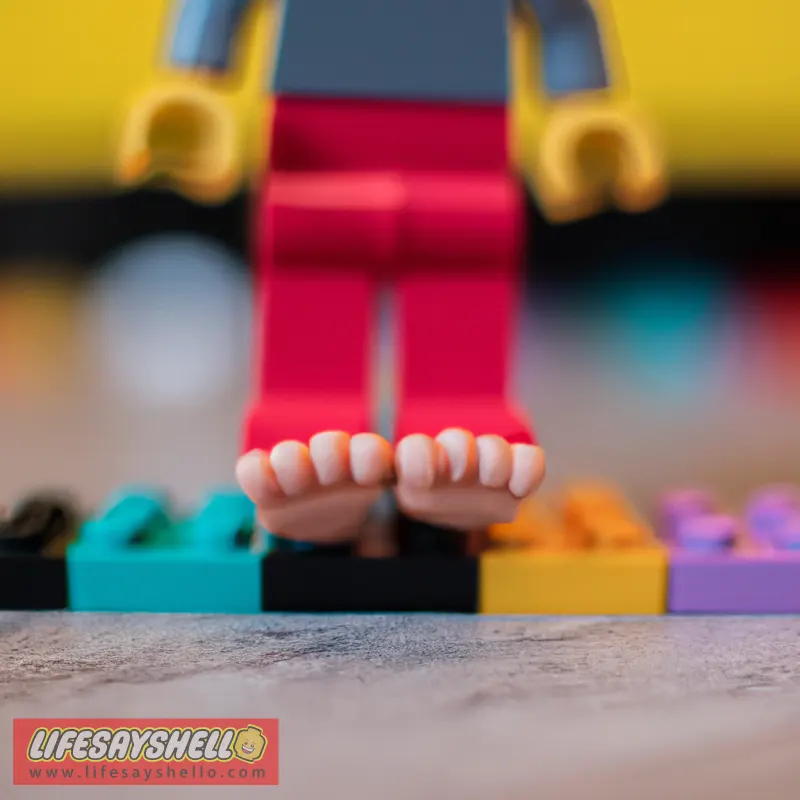Why Diabetes Commonly Causes Dangerous Foot Problems

Diabetes can lead to nerve damage, poor circulation, and infections that put your feet at serious risk. Understanding why these issues happen is key to prevention.
Diabetes wreaks havoc on many parts of the body if blood sugar levels aren’t well controlled. But the feet seem to take an extra beating. Foot problems are incredibly common in people with diabetes, and they can escalate into severe complications like amputation if neglected.
It’s critical to understand why diabetes makes foot problems more likely. That knowledge empowers you to take preventive action through proper foot care and blood sugar control. In this article, we’ll dive into the top reasons diabetes often results in foot complications. Arm yourself with this info to keep your feet healthy!
High Blood Sugar Damages Nerves in the Feet
Diabetes can cause nerve damage called diabetic neuropathy. Here’s how it happens...
When blood sugar levels stay elevated over many years, that excessive glucose starts poisoning nerves. Nerves in the feet and legs are especially vulnerable. The nerve fibers get irritated and inflamed, disrupting normal sensation.
Nerve damage usually starts with tingling or numbness in the feet, making it hard to feel hot and cold temperatures. This condition is called peripheral neuropathy. As it progresses, people lose the ability to feel touch, vibration, and pain in their feet. They can’t sense whether something is rubbing, pinching, or putting pressure on part of their foot.
This numbness seems harmless at first. But the inability to feel your feet is extremely dangerous. Small injuries easily go unnoticed, like:
- Blisters and calluses caused by friction
- Cuts, scrapes, and puncture wounds
- Tiny splinters or pebbles in shoes
These minor wounds often turn into major problems as neuropathy worsens. Unfelt injuries remain untreated and grow infected. People may develop large, foul-smelling ulcers on their feet without even realizing it due to the numbness.
These severe infections sometimes never heal properly. They can burrow deep into tissues and bone, destroying them. In the worst cases, gangrene sets in and amputation is needed to save the person’s life.
All because high blood sugar slowly killed the nerves that allow healthy people to feel - and therefore care for - their feet.
Diabetes Restricts Blood Flow to the Feet
On top of damaging nerves, diabetes also restricts circulation to the feet over many years. Here’s what happens...
Elevated blood sugar levels damage blood vessels, making them stiffer and narrower. This process is called atherosclerosis. It impairs blood flow throughout the body, especially in the smaller vessels of the extremities.
With poor circulation reaching their feet, people with diabetes suffer from two major problems:
Slowed healing: Without robust blood flow, the body can’t deliver enough oxygen and nutrients to a wound site to facilitate proper healing. Minor scrapes, cuts, blisters, etc that should quickly repair end up lingering for weeks or months.
Higher infection risk: A body needs strong circulation to bring immune cells that fight infection. Sluggish blood flow hinders that response. Bacteria and fungi can more easily colonize wounds on the feet and cause festering infections when circulation is weak.
As with diabetic neuropathy, these circulatory problems allow small, harmless wounds to spiral into severely infected ulcers, gangrene, and potential amputation.
The combination of nerve damage and circulatory deficits make the feet extremely vulnerable in people with diabetes. But high blood sugar also weakens immune function throughout the body, further raising infection risk.
Diabetes Alters Skin Texture on Feet
Another diabetes complication makes the skin of the feet more prone to problems.
When blood sugars stay high, nerves start misbehaving in another way. They send erroneous signals to the sweat glands, causing excessive perspiration in the feet. This leads to overly moist, softened skin that breaks down more easily.
At the same time, poor circulation reduces moisture delivery to the thick skin on the heels and balls of the feet. This paradoxically causes dry, flaky patches that crack.
The result is a mixture of overly sweaty and overly dry skin across the feet. This unhealthy skin texture is more likely to split open, allowing bacteria an entry point. The cracks also make it easier for fungi like athlete's foot to take hold.
Nerve Damage Can Deform Feet
While less common than other foot problems, nerve damage can also cause permanent changes to the shape of the feet. This condition is called Charcot foot.
Here’s how it happens...
Severe neuropathy destroys the ability to feel touch or pain. As a result, people unknowingly continue walking on an injured or fractured foot. The constant weight and pressure reshape the foot's architecture over time into an abnormal form.
Charcot foot often first appears as a red, swollen, warm foot—the inflammatory response to undetected trauma. As the foot structure collapses, the arch can flatten or disappear entirely. The ankle weakens and may turn inward or outward. Osteoarthritis develops.
These severe deformities make walking difficult and raise the risk of falls. They also create abnormal pressure points inside shoes that can lead to ulcerations.
While not a common diabetes complication, Charcot foot is a dramatic example of the damage uncontrolled blood sugar can inflict on the feet through neuropathic changes.
The Diabetic Foot Has Higher Infection Risk
We've covered how the numbness, circulatory deficits, and skin problems caused by diabetes make the feet vulnerable to wounds. But why do these minor injuries then get infected and become so dangerous?
There are a few reasons people with diabetes are prone to serious foot infections:
Higher exposure to bacteria: When protective sensation is lost, people with neuropathy are less aware of what their feet encounter. They may unknowingly step on contaminated soil or surfaces where fungi and bacteria thrive. Sweaty feet in closed shoes also breed microbes.
Weakened immunity: High blood sugar impairs white blood cells that fight infection. Diabetes is like a mild immunosuppressive condition, making the body less able to resist pathogens entering through wounds.
Foreign material: Calluses, corns, and thick, brittle toenails provide places for microorganisms to hide. Cracks in the skin also shelter bacteria.
Poor circulation: Weak blood flow prevents immune cells from reaching infections to combat them.
High blood sugars: Microbes like staph and strep feed on glucose. They thrive and multiply faster when excess sugar is present in blood and tissue.
These factors create a "perfect storm" for infections to grab hold and proliferate. Some common foot infections in people with diabetes include:
- Cellulitis - a spreading bacterial skin infection.
- Osteomyelitis - an infection in the bone.
- Gangrene - dead tissue due to a loss of blood supply.
- Fungal infections like athlete's foot.
Left untreated, these infections can spread upwards into the leg and become life-threatening. They sometimes require amputation to stop the infection from advancing.
This highlights why immediate treatment of foot wounds is so critical for people with diabetes. Don't take chances with infections.
How to Prevent Diabetic Foot Problems
While diabetes does increase the risk of foot complications, there are many things you can do to prevent them:
Control your blood sugar: Keeping glucose levels in a healthy range can help prevent or delay neuropathy, poor circulation, and immune issues.
Check feet daily: Look for cuts, blisters, red spots, swelling, and other abnormalities, since your nerves can't warn you. Use a mirror if needed.
Wash & moisturize feet: Clean with mild soap and dry thoroughly, especially between the toes. Moisturize to prevent cracking, but not between the toes.
Wear clean, well-fitted shoes: Don't walk barefoot. Ensure shoes aren't rubbing, squeezing, or irritating feet.
Treat minor wounds: Disinfect and cover small scrapes and blisters to prevent infection.
See a podiatrist: Get periodic foot exams. They can trim calluses/nails, detect problems early, and provide specialized footwear.
Don't self-treat: Seek professional help immediately for any wounds, infections, or foot pain. Don't try to self-treat advanced foot problems.
Get urgent care: If you see redness, swelling, oozing, foul odor, or changes in foot appearance, get evaluated right away. Infections must be treated ASAP.
Catching and caring for foot problems early is crucial. Never ignore or self-treat any issues with your feet. With proper precautions and prompt medical care, you can keep your feet healthy and avoid severe complications.




Comments